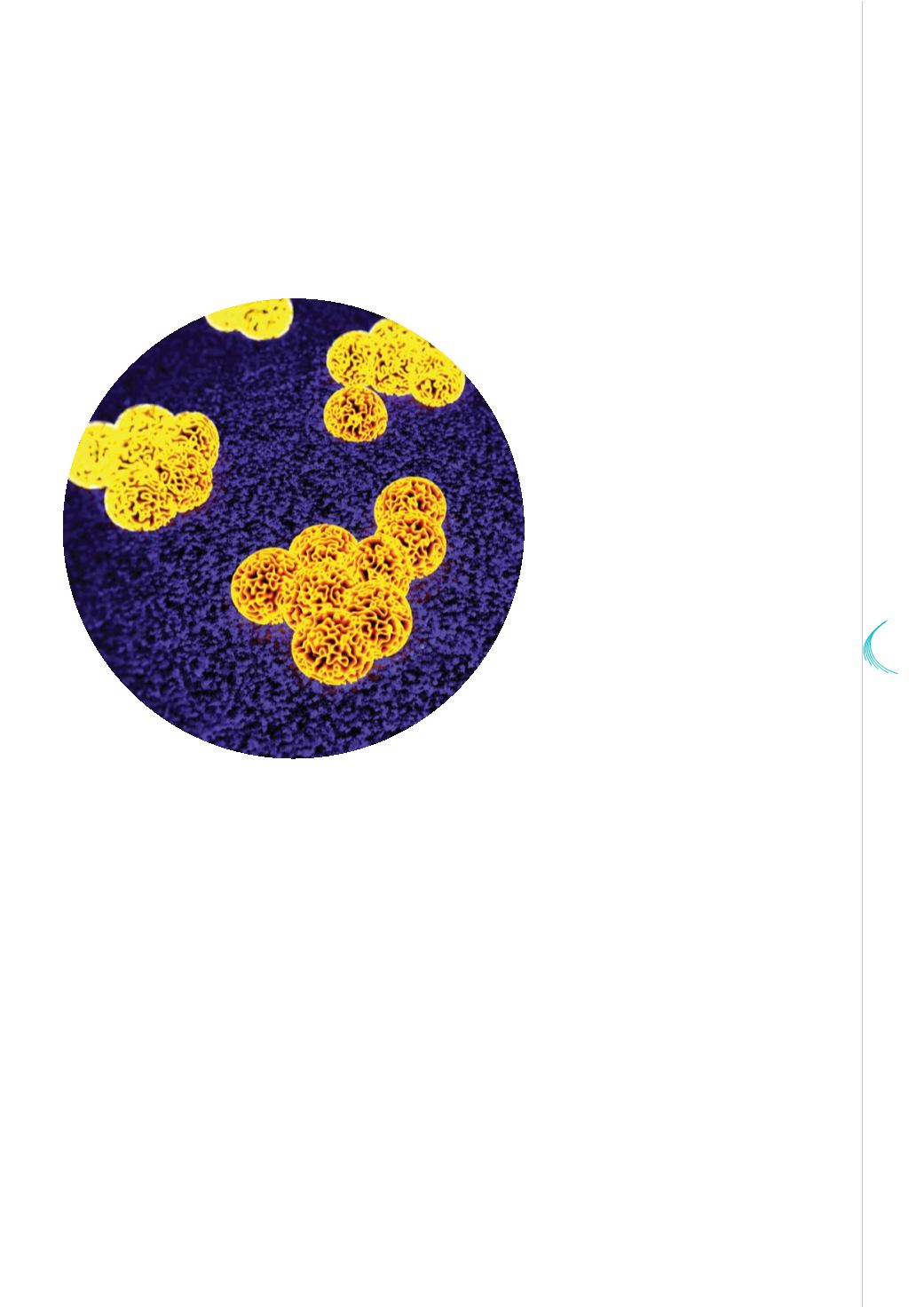

350
YEARS
OF
SCIENCE
21
© royaltystockphoto - Fotolia
Superbug antibiotic resistant bacteria
adaptability: bacteria are able, through various mechanisms, to receive or give, i.e. to exchange with other
bacteria, genomic fragments that provide new properties – in particular that of resisting to antibiotics – and
the ability to live in many environments.
Antibiotic resistance and the mondial panic
In 2016, indeed, one can no longer mention bacterial infectious
diseases without mentioning antibiotics. These
compounds, which started to be used on a daily
basis in the 1950s and predicted the end of
infectious diseases, have, together with
vaccines, significantly decreased
mortality due to infectious diseases
in developed countries. Sadly, the
first resistances appeared in the
late 1960s and such resistances
have become so serious that they
now lead to dramatic therapeutic
dead ends, with a conspicuous
return to the pre-antibiotic era.
What are these resistances due
to? In great part to the gene transfers
mentioned above, that make the bacteria
able to alter the antibiotic and thus inactivate
it, or to alter the target of the antibiotic, making the
antibiotic ineffective. Resistance may also stem from the
presence of a pump protein exporting the antibiotic after it has entered. Many bacteria have several
resistance genes; they are called multi-resistant. Death prediction figures due to antibioresistance have
become alarming: if we do not act now, by 2050 such deaths may every year rise to 10 million persons
worldwide. Public authorities are on alert and strong measures will be needed at the global level to put
an end to this situation, prevent the emergence of new resistance and produce new antibacterial agents.
CRISPR/Cas9, the bacterial system that revolutionizes genetics
Antibiotics are not the only antibacterial agents. In nature, bacteria are, as we are, attacked by viruses called
bacteriophages. These viral attacks take place in any environment but there are situations where they may
have dramatic consequences, for instance in the dairy industry. Some dairy products, such as yogurts,
are indeed made by specific bacteria selected for the aroma they bring to the final product. An attack by a
bacteriophage may have desastrous economic consequences. One of the great breakthroughs of these


















